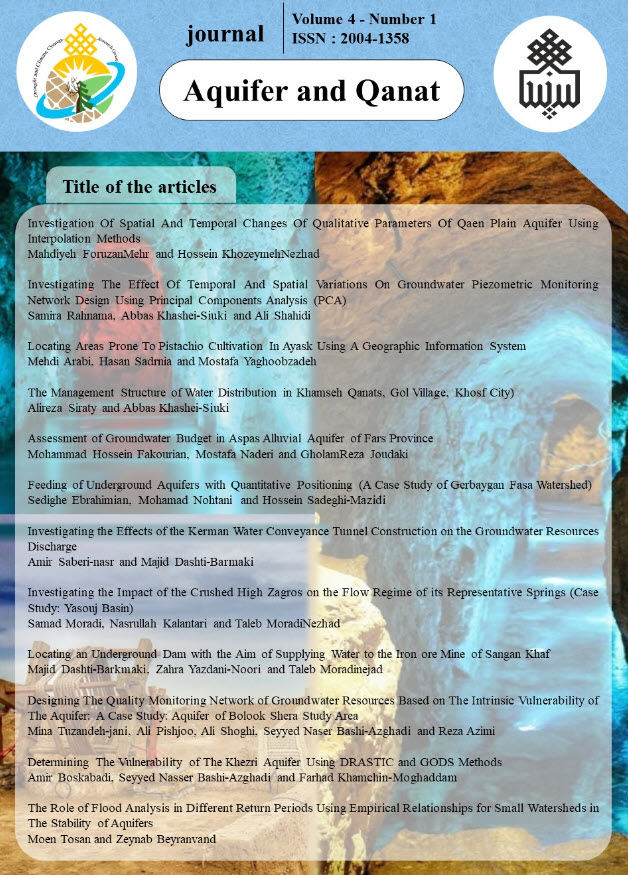Document Type : Original Article
Authors
1 Assistant Professor, Department of Geology, Faculty of Earth Sciences, Shahid Chamran University of Ahvaz, Ahvaz, Iran.
2 PhD Graduate of Kharazmi University and Expert of Sahel Omid Iranian Consulting Engineers, Tehran, Iran.
Abstract
The excavation of underground structures, especially water conveyance tunnels, disrupts the natural groundwater flow regime in the area around the structure and continuously reduces the hydraulic head of the groundwater; causing problems such as drying up wells, qanats and springs close to the tunnel axis. Therefore, predicting the decline of groundwater level and flow in the water resources around the tunnel axis is one of the monitoring requirements in such projects. The Kerman Water Conveyance Tunnel, with a length of approximately 38 km, is designed to supply drinking water to the city of Kerman. According to the initial field studies in the area, there are about 242 springs along the tunnel route. In this research, the method provided by Demattis was used to investigate the possibility of changing the groundwater discharge of the resources due to the excavation of the Kerman tunnel. For this purpose, factors such as fracture frequency, rock mass permeability, the tunnel overburden, the plastic zone radius around the tunnel, the distance of the springs from the tunnel, the existence of main intersection faults between tunnel and water resources, and the type of groundwater resources were evaluated. Finally, the drawdown hazard index was classified into four categories: 1) minimal drawdown 2) partial drawdown, 3) significant drawdown, and 4) complete drawdown. Based on the obtained results, 52% and 27% of groundwater resources were placed on the partial drawdown and complete drawdown classes, respectively. The rest of the groundwater resources belonged to the other categories.
Keywords
Main Subjects

